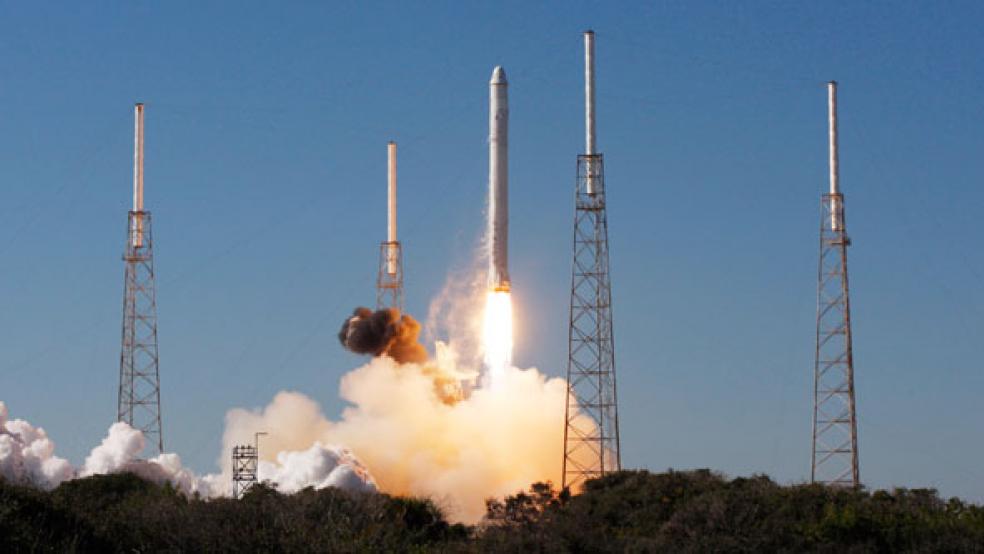An Obama administration plan to cut the cost of spaceflight services faces a key test on Saturday when a privately owned rocket lifts off for a practice run to the International Space Station.
If successful, Space Exploration Technologies, or SpaceX, would become the first private company to reach the $100 billion outpost, which flies about 240 miles above Earth.
"It is, by all accounts, an important step, bordering on a giant leap, for commercial space," said Michael Lopez-Alegria, a former NASA astronaut and space station commander who now heads the Commercial Spaceflight Federation, a Washington-based industry association.
SpaceX's Falcon 9 rocket and Dragon capsule are scheduled for launch at 4:55 a.m. EDT (0855 GMT) on Saturday from Cape Canaveral Air Force Station. If everything goes as planned, it would reach the space station on Tuesday.
Since the space shuttles were retired last year, NASA is dependent on partners Europe, Japan and especially Russia to fly to the station.
Instead of building a shuttle replacement, the U.S. space agency is spending about $3 billion a year on a new rocket and capsule to send astronauts to the moon, asteroids and eventually to Mars. To reach the station, NASA is investing in five U.S. firms: SpaceX and Orbital Sciences Corp for cargo transports; and SpaceX, Boeing, Sierra Nevada Corp, and Blue Origin, a startup owned by Amazon founder Jeff Bezos, for passenger ships.
RELATED: Mars Rover: Is the New $2.5 Billion Mission Worth It?
All the companies are contributing their own funds as well, a break from traditional U.S. government procurement practices. Rather than having their costs reimbursed, NASA's commercial partners are paid when they achieve predetermined milestones.
COMBINING TEST FLIGHTS
SpaceX, for example, has received $381 million from NASA so far for work on its station cargo hauler. In December 2010, the company successfully launched, orbited and returned a test Dragon capsule. For the upcoming second flight of Dragon, SpaceX will attempt to combine two test flights into one and berth the spacecraft at the space station. If successful, SpaceX can collect another $15 million from NASA and start working off a separate $1.6 billion contract to haul cargo to and from the station.
"This is a big leap in terms of complexity from the last flight," said Lawrence Williams, a former SpaceX vice president who now runs a business consulting firm. "If we're able to have a successful launch and dock with the space station, it's hard to overemphasize the significance of it."
A successful flight would not only validate SpaceX's technology, but also NASA's lower cost, milestone-based alternative contracting arrangements, Lopez-Alegria said.
The Obama administration is pushing Congress to embrace the partnering arrangements for commercial space taxis as well. Congress last year halved Obama's request for the so-called Commercial Crew program to $406 million. Proposed spending bills for the fiscal year beginning on October 1 cut the White House's $830 million request to no more than $525 million. The House of Representatives version also directs NASA to change its competitive strategy and work with one industry partner, a prospect that industry experts say will doom the program.
"Historically, anytime that people try to save money by saying 'Well, we can only afford to have one,' you quickly find out that if you think you can't afford to buy two providers, wait 'til what happens when you have monopoly prices from one," said Jeff Greason, founder and chief executive of privately held XCOR Aerospace.
"It's way too early to put your money on one horse or another," Lopez-Alegria said.

